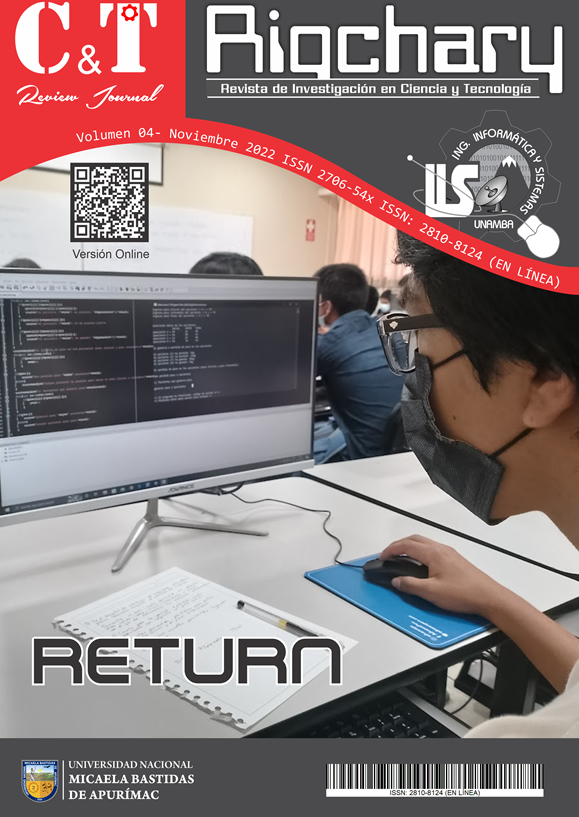Indistinguishable encryption scheme under chosen plaintext attack (IND-CPA)
Main Article Content
Abstract
Homomorphic encryption is a type of encryption with processing and evaluation capabilities on encrypted data. This paper examines the vulnerability with respect to the indistinguishable attack type under chosen plaintext attack (IND-CPA), existing with respect to security in homomorphic encryption. Homomorphic encryption performs different types of computations on encrypted data, some of them are partially homomorphic, fairly homomorphic, and fully homomorphic encryption. Partially homomorphic ciphers process only one type of operation, addition or multiplication; the fairly homomorphic ones that can process both operations, but for a limited set, and the fully homomorphic ones that allow processing and evaluation an arbitrary number of times. A chosen cleartext attack occurs in this type of encryption where the adversary knows the system, that is, the system has to be secure against an adversary who knows everything about it except the private key. The security levels present in the majority of completely homomorphic ciphers are sufficient for specific applications; the lack of the Indistinguishability property of a cryptosystem makes the production application of these types of encryption still impractical.
Article Details

This work is licensed under a Creative Commons Attribution-NonCommercial-NoDerivatives 4.0 International License.
When an author creates an article and publishes it in a journal, the copyright passes to the journal as part of the publishing agreement. Therefore, the journal becomes the owner of the rights to reproduce, distribute and sell the article. The author retains some rights, such as the right to be recognized as the creator of the article and the right to use the article for his or her own scholarly or research purposes, unless otherwise agreed in the publication agreement.
How to Cite
References
[ 1 ] G. A. Cubillos Franco, «Protección de datos compartidos en entornos de nube,» p. 76, 2020.
[ 2 ] B. D. Rugel Campoverde, «Seguridad en el sistema de gestiónde datos medidos de energía eléctrica aplicando cifrado homomórfico,» p. 27, 2019.
[ 3 ] K. V. Villacres Pacheco, «Estudio de factibilidad de la seguridad para el desarrollo de un prototipo Web de voto electrónico en la Universidad de Guayaquil,» Universidad de Guayaquil. Facultad de Ciencias Matemáticas y Físicas, p. 215, 2021.
[ 4 ] L. A. Quemba Martínez, «Cifrado de la información y su incidencia actual en la seguridad de la información para pequeñas empresas pymes en Colombia,» p. 99, 2020.
[ 5 ] A. Acar, «A survey on homomorphic encryption schemes: Theory and implementation,» ACM Computing Surveys (CSUR), pp. 1-35, 2018.
https://doi.org/10.1145/3214303
[ 6 ] L. Udstuen, «Facultades de Ciencias Económicas, Cs. Exactas y Naturales e Ingeniería,» p. 42, 2021.
[ 7 ] R. Rivest, «Shamir, a. and Adelman,» L." On Digital Signatures and Public Key, 1978.
[ 8 ] A. Bravo, «Selección e implementación de librería Java de algoritmo para E-Voting,» pp. 1-233, 2018.
[ 9 ] Y. ZHENG, «Residuosity problem and its applications to cryptography,» IEICE TRANSACTIONS (1976-1990), pp. 759-767, 1988.
[ 10 ] Barkee, «Why you cannot even hope to use Gröbner bases in cryptography: an eternal golden braid of failures,» Applicable Algebra in Engineering, Communication and Computing, pp. 235-252, 2020.
https://doi.org/10.1007/s00200-020-00428-w
[ 1 1] Caboara, «Lattice polly cracker cryptosystems,» Journal of Symbolic Computation, pp. 534-459, 2011.
https://doi.org/10.1016/j.jsc.2010.10.004
[ 12 ] Z. Peng, «Danger of using fully homomorphic encryption: A look at microsoft SEAL,» arXiv preprint arXiv:1906.07127, 2019.
[ 13 ] Y. Ouyang, «Quantum homomorphic encryption from quantum codes,» Physical Review A, 2018.
https://doi.org/10.1103/PhysRevA.98.042334
[ 14 ] J. L. G. Pardo, «Cifrado homomórfico: ejemplos y aplicaciones,» Gaceta de la Real Sociedad Matematica Española, pp. 697-712, 2012.





